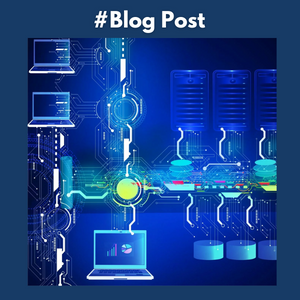Infrastructure plays a crucial role in driving success in today’s digital landscape, where businesses and government agencies constantly evolve and adapt to new technologies. As businesses strive for efficiency and scalability, Infrastructure as Code (IaC) has emerged as a game-changer.
IaC refers to managing and provisioning infrastructure resources using machine-readable code rather than manual processes. It allows organizations to treat their infrastructure configuration, deployment, and management as code, ensuring consistency, repeatability, and scalability. Several senior leaders have asked me about the difference between the two most popular open-source IaC tools, Terraform and Ansible. I have asked the same questions of my architects. After several sessions with my key technical staff, I concluded that we need Terraform, which allows you to define and provision infrastructure resources using configuration files, and Ansible to install software, configure services, and perform other configuration management tasks. While Terraform specializes in creating and managing infrastructure resources, Ansible excels in configuration management and automation.
At CSE, we integrate Ansible with Terraform and use the “local-exec” provisioner in Terraform. This provisioner allows us to run Ansible playbooks or commands after Terraform has provisioned the infrastructure resources.
I would like to dive into key comparisons to better explain how each tool operates and what sets it apart.
Similarities
1. Infrastructure Management: Terraform and Ansible are used for infrastructure management, allowing you to define and provision infrastructure resources declaratively. They provide the ability to specify the desired state of your infrastructure and handle the execution of those changes.
2. Open Source: Terraform and Ansible are open-source tools, which means they are freely available and have a vibrant community contributing to their development. This allows for continuous improvements, community support, and various available modules and plugins.
3. Multi-Cloud Support: Both tools support multiple cloud providers, enabling you to deploy and manage infrastructure across different cloud platforms. This flexibility empowers organizations to leverage the best features and pricing options.
Differences
1. Domain-Specific Language (DSL): Terraform uses its domain-specific language, HashiCorp Configuration Language (HCL). It provides a concise and expressive syntax for defining infrastructure resources and their dependencies. On the other hand, Ansible uses a more human-readable and straightforward YAML-based syntax, making it easier for beginners to grasp and write playbooks.
2. Execution Model: Terraform follows a plan-apply workflow. It first creates an execution plan by analyzing the desired changes in your infrastructure and then applies those changes to bring the infrastructure to the desired state. On the other hand, Ansible follows a push-based model where a centralized control node sends commands to target machines using SSH or other transport protocols.
3. Provisioning vs. Configuration Management: Terraform focuses primarily on provisioning infrastructure resources, such as virtual machines, networks, and storage. It excels at creating and managing the building blocks of your infrastructure. On the other hand, Ansible specializes in configuration management by allowing you to define and enforce the desired state of your systems, including software installations, configurations, and application deployments.
4. Complexity: While Terraform and Ansible have their learning curves, Terraform generally requires a deeper understanding of infrastructure concepts and resource providers. It is better suited for managing complex installations.
While I focused on two specific IaC tools in this article, I will encourage everyone to look at other tools, such as:
· Pulumi, which takes a unique approach to IaC by using familiar programming languages such as JavaScript, Python, and Go.
· Chef, focuses on automating and managing infrastructure at scale. Chef’s robust configuration management capabilities help organizations maintain consistency across their infrastructure and streamline deployment.
· SaltStack, a Python-based open-source tool that excels in configuration management and remote execution. Its scalable architecture and extensive library of predefined modules make it an ideal choice for managing complex infrastructure.
💡Key Takeaway: Infrastructure as code with Terraform and Ansible allows businesses to automate and manage their IT infrastructure efficiently. It provides benefits such as increased efficiency, consistency, collaboration, scalability, security, and disaster recovery and promotes DevOps collaboration.




